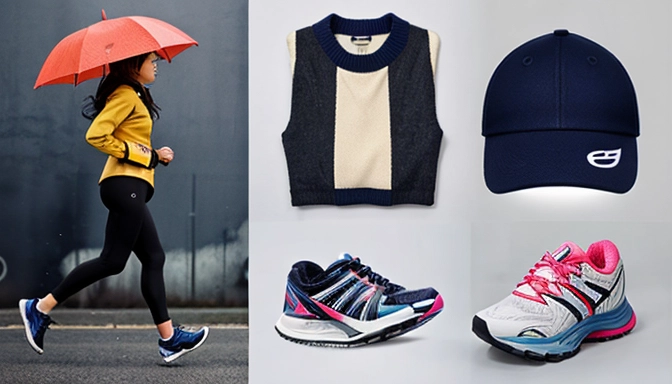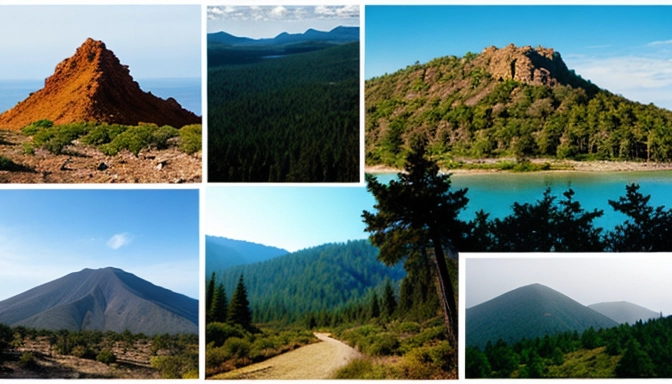Introduction
Exploring natural tourist spots can be a thrilling adventure, offering breathtaking landscapes and unforgettable experiences. However, these adventures come with their own set of challenges and potential pitfalls that can turn a dream trip into a frustrating ordeal.
In this blog, we delve into the top 11 most common traps tourists encounter when visiting natural sites and provide practical solutions to help you navigate these challenges.
From the dangers of the selfie craze to the unpredictability of weather, and from cultural sensitivities to the perils of scams and fraud, this guide aims to equip you with the knowledge to enjoy your travels safely and responsibly.
Whether you’re hiking through mountains, lounging by a waterfall, or exploring a dense forest, understanding and preparing for these common traps will ensure your journey is as smooth and enjoyable as possible.
Detailed Breakdown
1. Selfie Craze and Accidents
Trap:
Many tourists, especially youngsters, believe that if they don’t take selfies at exciting places, their visit is wasted. This mindset can lead to dangerous situations where people take unnecessary risks just to get the likes and comments on social media.
Solution:
Safety Over Social Media:
Always prioritize your safety over social media validation.
Safe Selfie Spots:
Choose designated safe selfie spots and heed clear warning signs in high-risk areas.
Enforce Regulations:
Encourage authorities to implement strict regulations and fines for those taking selfies in dangerous locations.
Stay Informed:
Be aware of frequent accidents related to unsafe selfies and prioritize safety over the perfect shot.
Avoid Recklessness:
Discard the “nothing will happen” attitude. Avoid those who take risks because past experiences made them overconfident—remember, accidents can happen unexpectedly.
Respect Natural Forces:
Never underestimate the power of natural forces; they are stronger than any human-made machinery.
Safety First: Always understand that safety comes first, even before your social media presence.
Follow Restrictions:
Adhere to restrictions for taking safe selfies and avoid unnecessary risks.
2. Unpredictable Weather

Trap:
Diverse geography results in sudden weather changes that can disrupt plans and create safety issues. Tourists often find themselves unprepared for sandstorms in deserts, sudden water flow in rivers, or unexpected sea waves on beaches.
Solution:
Weather Check:
Always check the weather forecast before heading to a natural site. Stay informed about local weather patterns and plan activities accordingly.
Local Guides:
Hire a local guide or seek advice about potential dangers. Take their advice seriously and respect their knowledge.
Pack Smart:
Bring appropriate clothing and gear for potential weather changes.
Be Prepared:
Prepare for sudden weather changes by carrying essentials like raincoats, extra clothing, and emergency supplies.
3. Environmental Hazards
Trap:
Every peak tourism season, newspapers report numerous accidents and casualties. A critical factor behind these tragedies is the tourists’ tendency to focus solely on the beauty of natural attractions, often overlooking the inherent dangers. While breathtaking landscapes offer immense appeal, they also come with risks such as landslides, floods, and wildlife encounters. The absence of adequate safety measures and information further exacerbates the likelihood of accidents and injuries at these natural tourist spots.
Solution:
Safety Briefings by Tour Operators:
Ensure tourists receive comprehensive safety briefings about potential risks and how to handle them.
Avoid Solo or Uninformed Family Trips:
Don’t travel alone or with family members who are unaware of the dangers.
Emergency Preparedness:
Familiarize yourself with emergency procedures and ensure you have access to local emergency services.
Region-Specific Gear:
Equip yourself with region-specific gear such as suitable shoes, caps, and jackets.
Clear Hazard Information:
Authorities should provide clear information about potential hazards and safety protocols.
4. Government Guidelines and Local Administrative Bodies
Trap:
Tourists, often unintentionally, may contribute to environmental degradation due to habits, misinformation, or simply being unaware of eco-friendly practices.
Solution:
Local Guidelines and Regulations:
Get acquainted with and follow guidelines set by local authorities and government regulations.
Eco-Friendly Practices: Embrace eco-friendly habits like responsible waste disposal, minimizing single-use plastics, and showing respect for wildlife.
Awareness of Environmental Issues:
Stay informed about local environmental issues and play a proactive role in conserving the natural beauty of the area.
5. Cultural Sensitivities

Trap:
Tourists may unintentionally disrespect local cultures by taking inappropriate photos or videos. For instance, photographing women from fishing communities who traditionally don’t cover their breasts or mocking tribal communities can create tensions and provoke administrative actions.
Solution:
Respect Local Culture:
Refrain from taking intrusive photos or videos that may disrespect local traditions.
Seek Permission:
Always ask for permission before capturing images of locals.
Mindful Sharing:
Avoid posting or sharing content that could be perceived as disrespectful.
Cultural Awareness:
Educate yourself on the cultural norms and practices of your destination to prevent unintentional offenses.
6. Transport Issues
Trap:
Unreliable or non-existent public transport can pose challenges for reaching or departing from a location. Safety issues can also arise when tourists opt to drive personal vehicles without adequate experience or expertise, particularly in off-road conditions. This dual challenge of transportation reliability and driving proficiency underscores the importance of careful planning and preparedness when exploring remote or less accessible destinations.
Solution:
Reliable Transportation:
Ensure your transportation is reliable and safe.
Driver Experience:
If using a personal vehicle, ensure the driver is experienced and skilled, especially for off-road driving.
Advanced Planning: Research and plan your transport options in advance, considering public transport reliability, and have a backup plan ready.
Safety First:
Prioritize safety when using personal vehicles; avoid using them for adventurous purposes.
Alternative Options:
If public transport is unreliable, consider renting from a reputable company or arranging private transportation.
7. Lack of Amenities
Trap:
At certain natural sites, basic amenities like restrooms, clean drinking water, and medical facilities may be scarce or unavailable, potentially causing discomfort and health concerns.
Solution:
Pack Essentials:
Prepare by packing essentials like portable water filters, first aid kits, and sanitation supplies.
Plan Ahead:
Research amenities at your destination and bring necessary items such as bottled water, portable restrooms, and a first aid kit.
Choose Accommodations Wisely:
Opt for accommodations that offer basic facilities to guarantee a comfortable and safe stay.
Be Resourceful:
Be prepared to manage with limited resources by researching amenity availability beforehand.
Use a Checklist:
Utilize a detailed checklist, such as our comprehensive 51-point guide, to ensure you have everything needed for a comfortable stay.
8. Overcrowding

Trap:
During peak seasons, beloved natural tourist spots can become overly crowded, resulting in extended wait times, restricted space, and safety concerns. This influx of visitors can detract from the tranquility and enjoyment that many seek when escaping urban life.
Solution:
Visit During Off-Peak Seasons:
Choose to visit popular tourist spots during times of the year when tourist numbers are lower. This strategy allows you to enjoy the attractions with fewer crowds, making your experience more peaceful and enjoyable.
Explore Lesser-Known Gems:
Instead of visiting the most famous tourist spots that attract large crowds, research and discover destinations that are equally beautiful but less frequented by tourists. This not only provides a more serene experience but also supports lesser-known local economies and preserves natural environments.
Time Your Visits:
Plan your visits early in the morning or later in the afternoon. These times typically have fewer visitors compared to midday when tourist traffic peaks. This approach lets you explore the attractions in a more relaxed atmosphere and often provides better lighting for photography.
Use Crowd Forecasts:
Take advantage of online resources that provide crowd predictions for popular tourist sites. By checking these forecasts, you can adjust your schedule to visit during less busy times or even consider alternative attractions if your preferred spot is expected to be crowded. This proactive approach helps you make the most of your travel experience while avoiding the frustrations of overcrowding.
9. Overpricing
Trap:
Tourists frequently encounter inflated prices for goods, services, and activities, resulting in higher expenses compared to what locals typically pay.
Solution:
Research Average Costs:
Before your trip, research typical prices for goods and services in the area to avoid overpaying.
Negotiate Wisely:
Be prepared to negotiate prices where appropriate and stay cautious of deals that appear unusually cheap.
Utilize Price Comparison Tools:
Use apps and websites that provide price comparisons and reviews from fellow travelers to find reliable and fair deals.
Shop Local:
Avoid tourist hotspots and opt instead for local markets and shops, where prices are often more reasonable and authentic.
Consider Local Markets:
Explore local markets and stores as alternatives to tourist-centric areas, ensuring better value for your purchases.
10. Scams and Fraud
Trap:
Tourists are frequently targeted by scams such as fake tickets and deceptive tour packages. Local individuals or fake guides may engage in deceptive practices to exploit tourists for financial gain.
Solution:
Stay Scam-Aware:
Keep yourself updated on prevalent scams in your destination and stay vigilant.
Trustworthy Tickets and Tours:
Purchase tickets and book tours only from reputable and verified sources.
Verify Credentials:
Ensure guides and tour operators have legitimate credentials and reviews.
Beware of Unrealistic Offers:
Exercise caution with deals that appear too good to be true; always request receipts and documentation.
Avoid Unsolicited Offers:
Decline unsolicited offers and rely on recommendations from trusted sources.
Use Authenticity Apps:
Utilize apps and websites that verify the authenticity of services and guides for added security.
11. Language Barriers
Trap:
Language barriers often result in challenges when communicating with locals, leading to misunderstandings, misdirection, and the potential for receiving incorrect or exaggerated information from unofficial guides or locals looking to profit quickly. Additionally, poor or nonexistent signage due to language differences can further complicate navigation and contribute to confusion in unfamiliar areas.
Solution:
Language Assistance:
Learn essential phrases in the local language or utilize translation apps to facilitate communication. Carry a language guide or phrasebook for convenience.
Navigation Aid:
Carry a map or download offline maps to navigate areas with inadequate signage. Seek assistance from tourism offices or trustworthy sources if uncertain.
Official Information: Obtain information from official sources like tourist information centers for reliable guidance.
Verify Information: Cross-check any details provided by locals or unofficial guides with trustworthy sources to ensure accuracy.
Use Reliable Sources:
Rely on official guides and verified sources for accurate information and guidance.
Clear Directions :
Always have clear, written directions and information to prevent getting lost in unfamiliar surroundings.
Conclusion
Traveling to natural tourist spots can be a wonderfully enriching experience, but it’s important to be aware of the common traps that can catch even the most seasoned travelers off guard.
By understanding the potential hazards—from the selfie craze and unpredictable weather to environmental dangers and cultural sensitivities—you can better prepare for your adventures and avoid unnecessary pitfalls.
Ensuring safe and reliable transportation, adhering to government guidelines, respecting local cultures, and being vigilant about scams are all crucial steps in making your trip enjoyable and trouble-free.
Remember, being a responsible traveler not only enhances your own experience but also helps preserve the natural beauty and cultural integrity of the places you visit. With the right knowledge and preparation, you can navigate the challenges of natural tourist spots, ensuring that your journey is filled with positive memories and lasting impressions. Happy travels!
Why This Product Deserves Your Attention
As usual, at the end of every blog on trapbreaker.com, we recommend products that align with the theme of the blog and act as helpful tools for improving your travel experience. For this blog, we recommend the Running Shoes and the Bobble Water Bottle with Carbon Filter.
The Running Shoes are perfect for tourists who need comfort and durability while exploring natural tourist spots. They provide the support and grip needed for long walks, hikes, or even tackling uneven terrains, ensuring you stay comfortable and avoid potential injuries. The Bobble Water Bottle with Carbon Filter is another excellent recommendation for staying hydrated safely. It allows you to filter out contaminants from natural water sources, ensuring clean and fresh water throughout your trip, helping you stay healthy and prepared for any adventure.
If you’re curious about why these products deserve your attention, you’ll find a comprehensive review of each on our partner site, awareandbeware.com. The review dives into all aspects of the products, including their features, benefits, and potential drawbacks, helping you make a fully informed decision. I encourage you to check out the full-length reviews for a deeper understanding of why these products might be the perfect fit for your needs.



